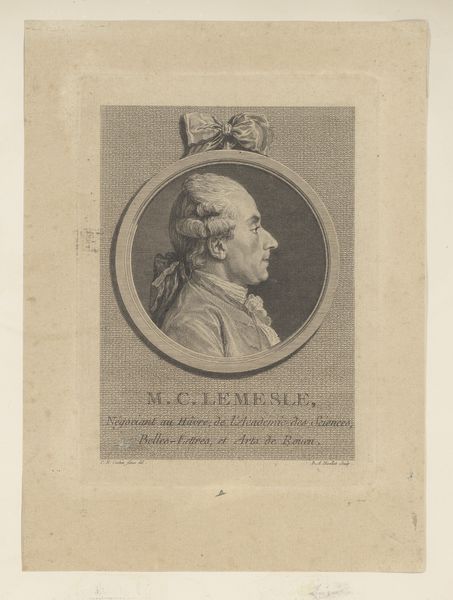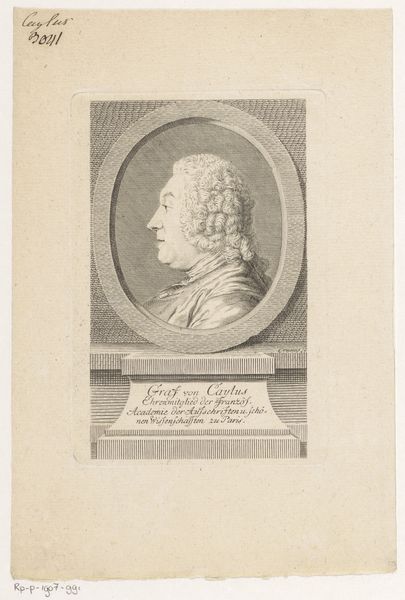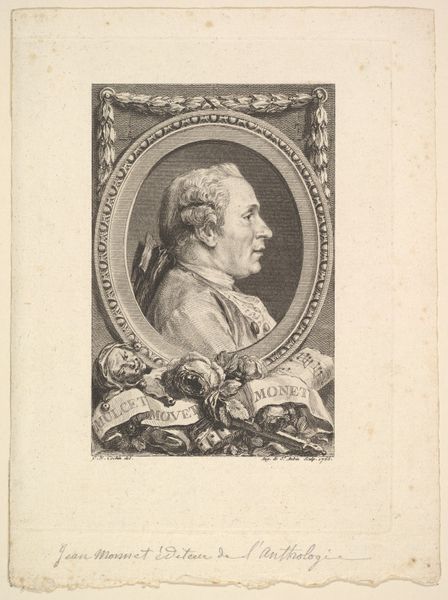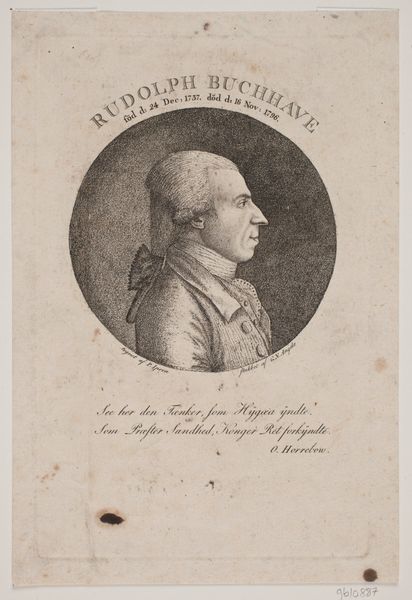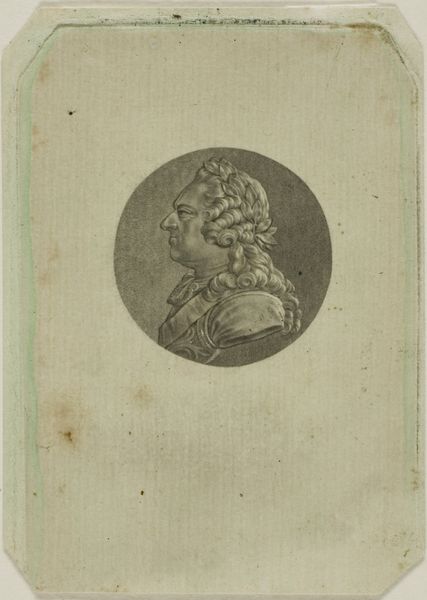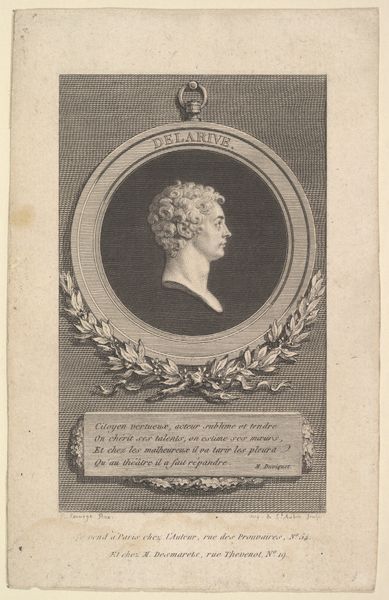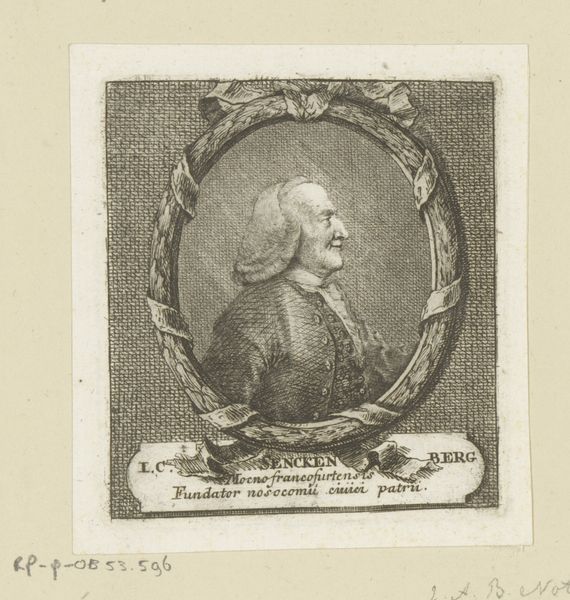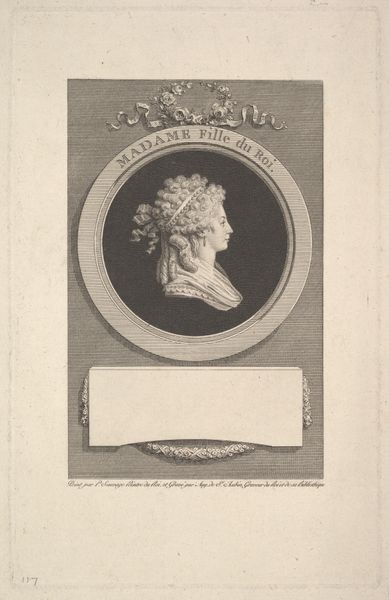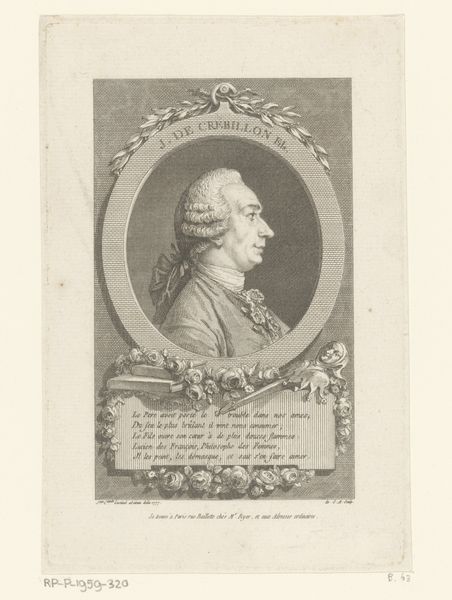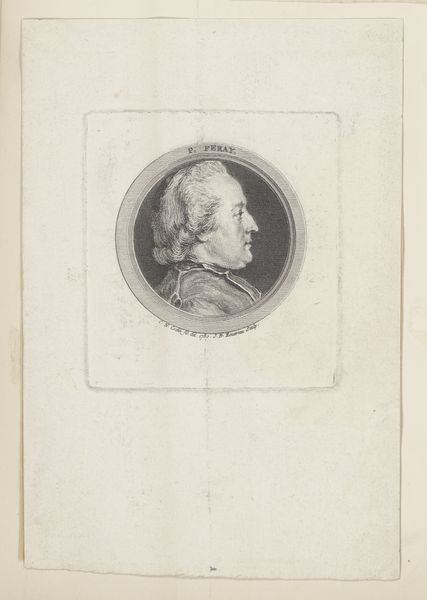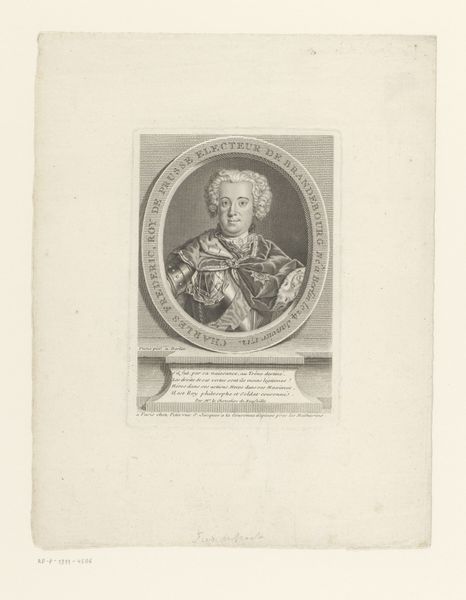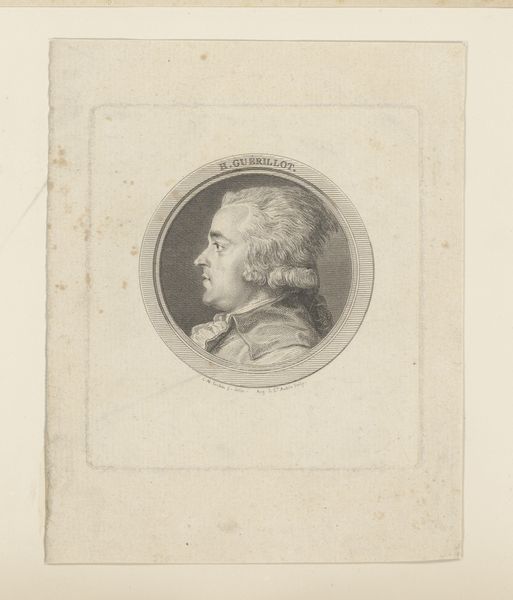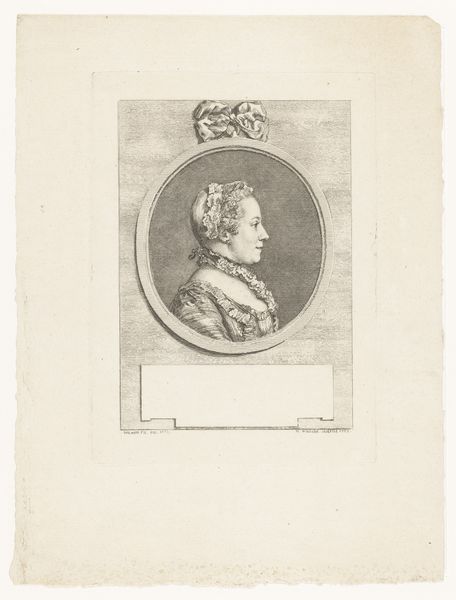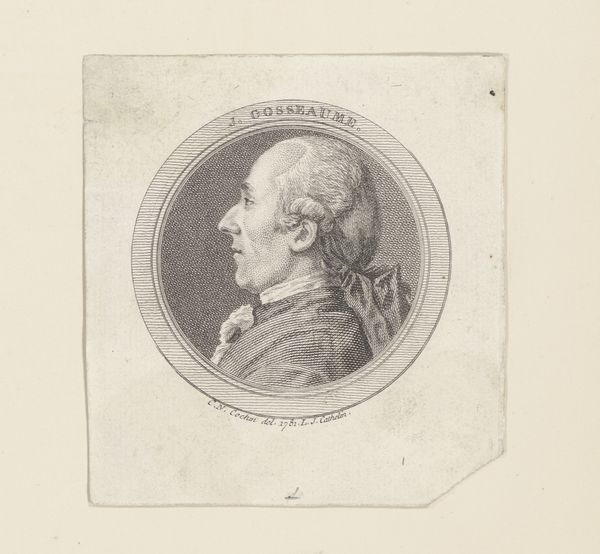
Print of a Portrait Medal of Louis XVI 1789 - 1790
0:00
0:00
drawing, print, engraving
#
portrait
#
drawing
#
neoclacissism
# print
#
history-painting
#
academic-art
#
engraving
Dimensions: Sheet: 3 1/2 × 2 3/4 in. (8.9 × 7 cm) Plate: 2 13/16 × 2 3/16 in. (7.2 × 5.6 cm)
Copyright: Public Domain
Curator: Before us, we have a print of a portrait medal depicting Louis XVI, King of France. It's attributed to Augustin de Saint-Aubin and dates to between 1789 and 1790, a pivotal moment in French history. Editor: There's a distinct coolness about it, almost clinical. The stark lines and muted tones lend it a sense of detachment, despite being a portrait of a King. The composition is incredibly simple— a circle within a rectangle. Curator: Indeed. The circular form itself carries symbolic weight, echoing the Roman imperial tradition of coin portraits and suggesting authority and permanence, even as the revolution threatened those very ideas. Note how the sharp, precise lines emphasize clarity and rationality. Editor: Yet the imagery is weighed down by the era's social anxieties. The fleur-de-lis on his decoration and the formal inscription "Louis XVI, King of the French" are potent symbols of royalty—symbols rapidly losing their meaning and power at the time this print was made. The image, I think, unintentionally carries an elegaic mood. Curator: That’s an interesting point. Looking at the construction, I am struck by the artist’s controlled application of line, how it defines form and texture while maintaining an almost clinical precision, something characteristic of the Neo-Classical movement and its obsession with order and structure. Editor: Right, because while the style may be Neo-Classical, echoing the rational and ordered aesthetic associated with stability, that order seems almost brittle in the face of the approaching upheaval. It's a ghost of an empire in visual form. Curator: This highlights how artistic techniques can sometimes run parallel to socio-political themes. The choice of engraving itself suggests reproducibility, perhaps an attempt to disseminate a certain image of the monarchy widely. Editor: Which, in hindsight, proves tragically ironic given what was about to transpire. The symbols, meant to reinforce royal authority, are charged with this new context that haunts the portrait. Curator: Analyzing its form and method allows us to understand how an artwork functions, irrespective of its ultimate historical destiny. Editor: But considering the portrait’s loaded imagery allows a deep feeling for the period it represents.
Comments
No comments
Be the first to comment and join the conversation on the ultimate creative platform.
